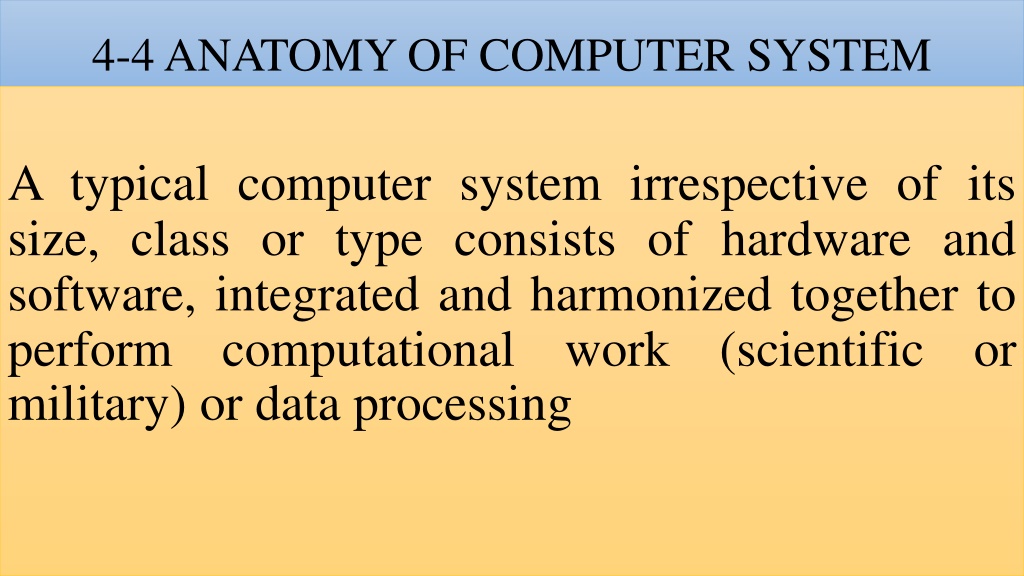Anatomy of a Computer System: Hardware Components and Functions
A typical computer system consists of hardware and software working together to perform various computational tasks. The hardware components include the central processing unit (CPU), input/output devices, storage units, and the motherboard. The CPU acts as the main brain of the computer, performing operations on data received from input devices or memory. The motherboard connects all components via traces, enabling the computer's computing capability. Understanding the hardware elements and their functions is essential for comprehending how a computer system operates.
Download Presentation

Please find below an Image/Link to download the presentation.
The content on the website is provided AS IS for your information and personal use only. It may not be sold, licensed, or shared on other websites without obtaining consent from the author. Download presentation by click this link. If you encounter any issues during the download, it is possible that the publisher has removed the file from their server.
E N D
Presentation Transcript
4-4 ANATOMY OF COMPUTER SYSTEM A typical computer system irrespective of its size, class or type consists of hardware and software, integrated and harmonized together to perform computational military) or data processing work (scientific or
4-4-1COMPUTER HARDWARE Hardware system: Computer hardware consists of the components that can be physically handled. It refers to the physical units or machine of functional units, which makes up the computer configuration which is done to suit the goals and objectives of the user. The function of these components is typically divided into three main categories: input, output, and storage.
Components in these categories connect to microprocessors, specifically, the computer s Central Processing Unit (CPU), the electronic circuitry that provides the computational ability and control of the computer, via wires or circuitry called a bus. Hardware may be classified into Central Processing Units (CPU) and the peripherals. The CPU entails Control Unit (CU), Arithmetic and Logic Unit (ALU) and the Internal Memory Unit (IMU) or main memory. The peripherals consist of the input, output and Auxiliary Storage Units.
Computer is made up of elements include: 1.A central processing unit (ALU and CU) 2.Input unit 3.Output unit 4.Storage unit (Internal and Auxiliary) 5.The communication network; bus that links all the elements of the system, and connects the 6.External world. (Cables and Cords)
4-4-2 MOTHERBOARD: The motherboard is a printed circuit board that connects other components through the use of traces, or electrical pathways. The motherboard is indispensable to the computer and provides the main Personal computers normally have one central processing unit (CPU) on the motherboard. computing capability.
THE CENTRAL PROCESSING UNIT (CPU) This is the main brain of the computer that accepts data, performs operations on the data and sends out the result. Information from an input device or from the computer s memory is communicated via the bus to the Central Processing Unit (CPU), which is the part of the computer that translates commands and runs programs. It consists of ALU and CU, and a single chip or series of chips that performs arithmetic and logical calculations and controls the operations of the other elements of the system.


























